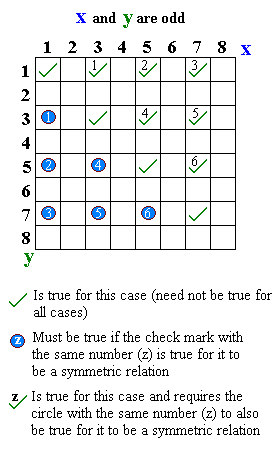Trajectory
In mathematics, a binary relation R over a set X is symmetric if it holds for all a and b in X that if a is related to b then b is related to a.
In mathematical notation, this is:
Note: symmetry is not the exact opposite of antisymmetry (aRb and bRa implies b = a). There are relations which are both symmetric and antisymmetric (equality and its subrelations, including, vacuously, the empty relation), there are relations which are neither symmetric nor antisymmetric (the relation "divides" on the set ℤ; the relation "preys on" in biological sciences), there are relations which are symmetric and not antisymmetric (congruence modulo n), and there are relations which are not symmetric but are antisymmetric ("is less than or equal to").
A symmetric relation that is also transitive and reflexive is an equivalence relation.
Graph-theoretic interpretation
In an undirected graph, the relation over the set of vertices of the graph under which v and w are related if and only if they are adjacent forms a symmetric relation. Conversely, if R is a symmetric relation over a set X, one can interpret it as describing an undirected graph with the elements of X as the vertices and the pairs in R as the edges. Thus, symmetric relations and undirected graphs are combinatorially equivalent objects.
Examples
- "is married to" is a symmetric relation, while "is less than" is not.
- "is equal to" (equality)
- "is comparable to" for a partial order
- "... is odd and ... is odd too":

